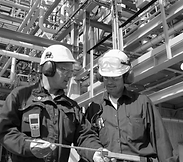Engineering and Technology Quarterly Reviews
ISSN 2622-9374




Published: 14 September 2023
Groundwater Nitrate Pollution Assessment in Warangal
Ahmad Reza Rostayee, Nematullah Fetrat
Bamyan University

Download Full-Text Pdf
10.5281/zenodo.8340299
Pages: 19-25
Keywords: Nitrate Assessment, Groundwater, Warangal, Urban, Agriculture, Dispersion and Normal Distribution
Abstract
Due to nitrogen fertilizers consumption and unsafe wastewater networks of cities, now nitrate pollution is one of the challenging issues of surface and groundwater pollution. In case of this contaminant present in drinking water causes ‘Blue Baby’ disease for infants, cancers, and harmful for pregnant women. So, it is very important to assess nitrate concentration for maintaining better health precaution. Nitrate concentration, dispersion and its distribution status were evaluated in Warangal District, India. The samples show that nitrate concentration in Warangal is very high in both urban and agriculture area which have maximum level of 49.5 & 83.3 mg/ liter as (NO3 – N); average value of 40.3 and 69 mg/l respectively. Even though in urban area the amount of concentration is somehow low, but it also is in harmful level. Nitrate dispersion could be observable from the high standard deviations which are 7.4 for urban area and 12.065 for agriculture area, it means nitrate dispersion in agriculture area is more than urban area’s groundwater and it is clearly observed from normal distribution curves. This high spread out on nitrate concentration shows many variations of nitrate sources from many different locations that various amount of nitrate pollutions is infiltrated into groundwater.
References
Bijay-Singh *, Y.-S. G. (1995). Fertilizer-N use efficiency and nitrate pollution of developing countries. Journal of Contaminant Hydrology, 167-184.
BUROW, K. R. (2010). Nitrate in Groundwater of the United State. Environ. Sci. Technol, 4988–4997.
KAREN R. BUROW, *. (2010). Nitrate in Groundwater of the United state. Environ. Sci. Technol, 4988–4997.
Kumazawa, K. (2002). Nitrogen fertilization and nitrate pollution in groundwater in Japan:. Nutrient Cycling in Agroecosystems, 129-137.
M. Bhaskar Reddy, S.-B. (2016-2017). Central Groundwater Board, Groundwater Year Book , Telangana State. Hyderabad: Central Ground Water Board, Govt. of India.
Mattern, S., Fasbender, D., & Vanclooster, M. (2009). Discriminating sources of nitrate pollution in an unconfined sandy aquifer. Journal of Hydrology, 275-284.
Narsimha. A1, G. S. (2012). Physico-chemical analysis of drinking water quality in Hanamkonda area,. Journal of Chemical and Pharmaceutical Research, 4255-4259.
SAGAR, R. (2013). GROUND WATER BROCHURE. Warangal: CENTRAL GROUND WATER BOARD, Govt. of India.
Samuel Mattern *, D. F. (2009). Discriminating sources of nitrate pollution in an unconfined sandy aquifer. Journal of Hydrology, 275-284.
Simpkins, S. (2001). Agricultural contaminants in Quaternary aquitards:. Hydrogeology Journal, 44-59.
W.L. Zhang *, Z. T. (1996). Nitrate pollution of groundwater in northern China . agriculture ecosystem and environment, 223-231.



